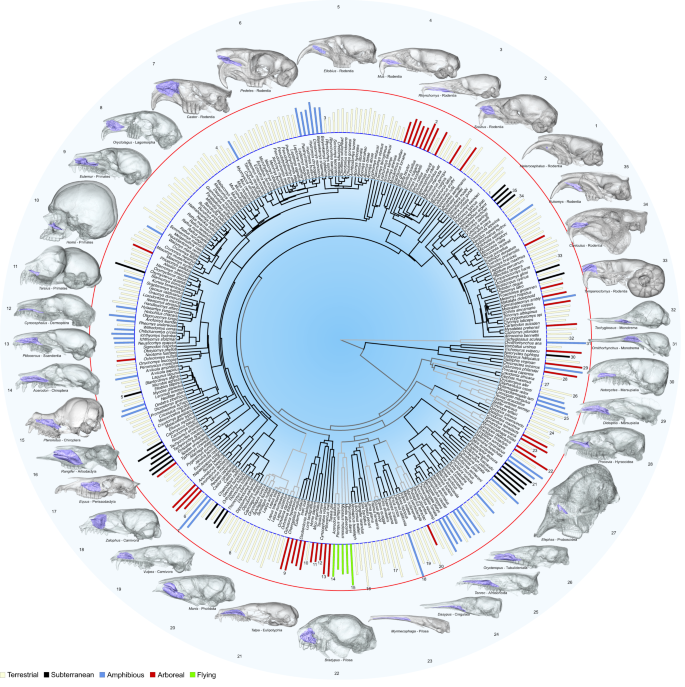2023-07-31 ワシントン州立大学(WSU)
 A male leafcutter bee of the genus Megachile. This genus was part of the broad sampling effort by scientists involved in the new study of bee evolution (photo by Andrew Murray).
A male leafcutter bee of the genus Megachile. This genus was part of the broad sampling effort by scientists involved in the new study of bee evolution (photo by Andrew Murray).
◆研究チームは、蜜蜂の進化史を再構築し、その古さを推定し、世界中での地理的な拡大を特定しました。その結果、彼らの起源は西部ゴンドワナ、現在のアフリカと南アメリカの大陸が含まれていた古代の超大陸にあったことが示されました。以前の研究では、蜜蜂はハチから進化したとされており、捕食者から蜜と花粉の収集者へと進化したとされていましたが、この研究では、それらが白亜紀初期の乾燥した地域で進化したことが示されています。また、新大陸が形成されるにつれて、蜜蜂は北上し、被子植物とともに多様化して広がっていったことも示されています。
◆蜜蜂の主要な分類群は恐竜が絶滅した6,500万年前以前に分化したようです。これらの研究結果は、蜜蜂と被子植物が共進化した経緯を明らかにするための重要な一歩であり、蜜蜂がどのようにして現代の生態的なニッチを埋めるように広がっていったのかを理解することは、受粉動物の個体群を健全に保つのに役立つ可能性があります。
<関連情報>
- https://news.wsu.edu/press-release/2023/07/31/bees-likely-evolved-from-ancient-supercontinent-earlier-than-suspected/
- https://www.sciencedirect.com/science/article/abs/pii/S0960982223009120
時間と空間におけるミツバチの進化の歴史 The evolutionary history of bees in time and space
Eduardo A.B. Almeida, Silas Bossert, Bryan N. Danforth, Diego S. Porto, Felipe V. Freitas, Charles C. Davis, Elizabeth A. Murray, Bonnie B. Blaimer, Tamara Spasojevic, Patrícia R. Ströher, Michael C. Orr, Laurence Packer, Seán G. Brady, Michael Kuhlmann, Michael G. Branstetter, Marcio R. Pie
Current Biology Published: July 27, 2023
DOI:https://doi.org/10.1016/j.cub.2023.07.005
Summary
Bees are the most significant pollinators of flowering plants. This partnership began ca. 120 million years ago, but the uncertainty of how and when bees spread across the planet has greatly obscured investigations of this key mutualism. We present a novel analysis of bee biogeography using extensive new genomic and fossil data to demonstrate that bees originated in Western Gondwana (Africa and South America). Bees likely originated in the Early Cretaceous, shortly before the breakup of Western Gondwana, and the early evolution of any major bee lineage is associated with either the South American or African land masses. Subsequently, bees colonized northern continents via a complex history of vicariance and dispersal. The notable early absences from large landmasses, particularly in Australia and India, have important implications for understanding the assembly of local floras and diverse modes of pollination. How bees spread around the world from their hypothesized Southern Hemisphere origin parallels the histories of numerous flowering plant clades, providing an essential step to studying the evolution of angiosperm pollination syndromes in space and time.


